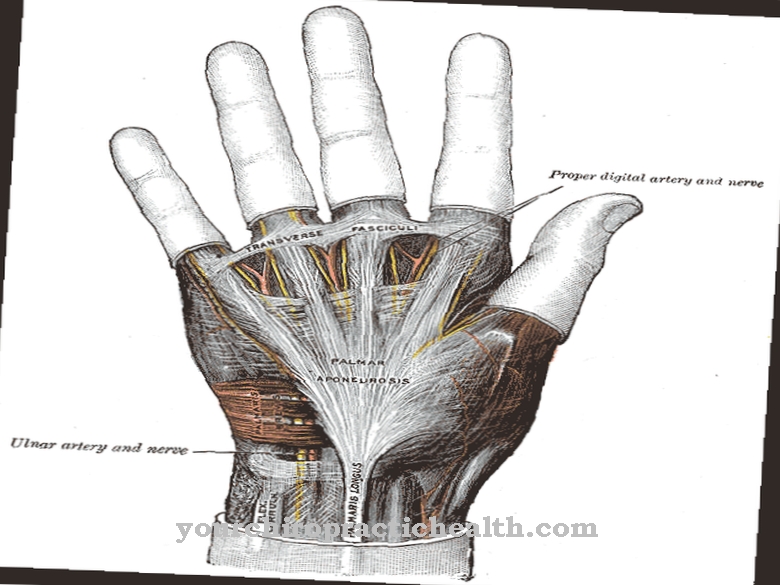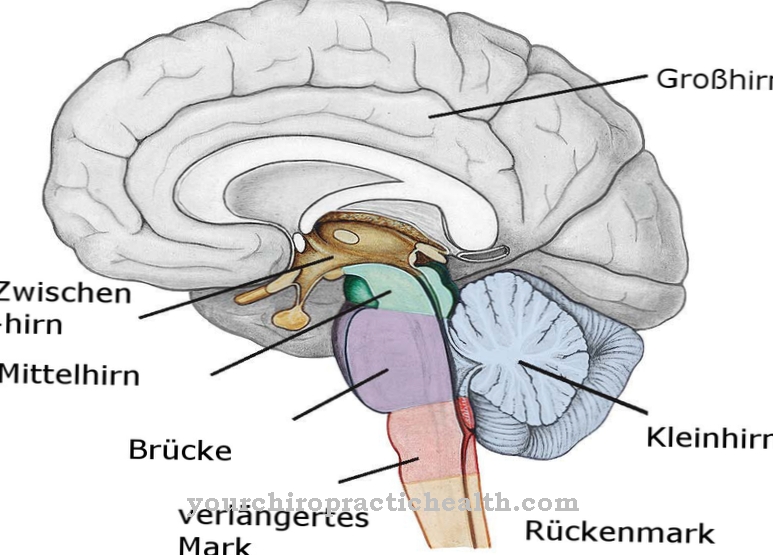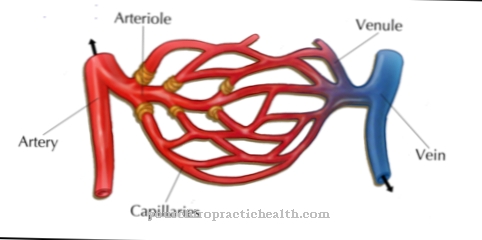Microtubules are protein filaments that have a tubular structure and together with the actin and intermediate filaments form the cytoskeleton of eukaryotic cells. They stabilize the cell and also participate in the transports and movements within the cell.
What are microtubules?
Microtubules are tubular polymers whose protein structures have a diameter of about 24 nm. Together with other filaments, they form the cytoskeleton, which gives the cells strength and shape. In addition, they also play an essential role in cell movement and are also important elements of cilia, flagella, centrioles and nuclear spindles. Microtubules are also very important for cancer therapy. Some active ingredients that have an influence on the division of tumor cells are already used in the form of chemotherapeutic or cytostatic agents.
Anatomy & structure
Microtubules consist of alpha and beta tubulin dimers (heterodimers). The heterodimers are the subunits of the microtubules, which are also known as protofilaments. The protofilaments build up the hollow body in the form of a spiral by being superposed, with only alpha-tubulin units at one end and only beta-tubulin sub-units at the other end. Alpha and beta tubulin have the ability to bind 1 molecule of GTP. The GTP is irreversibly bound to the alpha tubulin.
The heterodimers are preferably located at the plus end, therefore a microtubule grows in this direction, while the minus end forms the stable side. A microtubule is between one micrometer and several hundred micrometers long. The microtubules are arranged either as a singlet, doublet or triplet. The filaments normally come from the microtubule organizing center, including, for example, the centrioles or basal bodies. In addition, a distinction is made between two different populations: dynamic, short-lived and stable, long-lived microtubules. The stable microtubules represent the framework of flagella, cilia and centrioles.
Furthermore, the long-lived microtubules are also found in the axons of the neurons or in the flagella of sperm cells. There they ensure flexibility, stability and mobility. Dynamic microtubules can also be found where rapid reconstruction is required. In addition, they ensure the distribution of chromosomes in the daughter cells. Microtubules are built up or broken down alternately, with the build up and breakdown mainly taking place at the plus end. A microtubule grows until there are no longer enough heterodimers.
Then the depolymerization begins, whereby the concentration of tubulin increases again and a new growth begins. Different substances prevent the depolymerization or the polymerization, these are used to treat diseases.
Function & tasks
Microtubules have multifunctional tasks. They influence the arrangement of the chromosomes and the movement of the vesicles, which works like a rail system. The vesicle activity is the prerequisite for the transport of engine proteins. The transport takes place due to the proteins kinesin and dynein, which are located on the vesicle surface. Vesicles covered with dynein are transported from the plus to the minus end, while vesicles covered with kinesin are transported in the opposite direction.
If individual microtubules accumulate, complex structures are formed. These include the centrioles and the basal bodies. Centrioles are made up of nine microtubule triplets, which consist of two incomplete and one complete microtubule. Basal bodies have the same structure as centrioles. They are located under the cell surface and have the task of anchoring flagella and cilia. Kinocilia are composed of a central pair of microtubules and nine microtubule doublets. Kinocilia occur mainly on epithelial cells and transport small particles on the surface of the cell. Cilia consist of a plasma membrane and are found on the surface of eukaryotic cells.
Their center consists of stable microtubules that are arranged in the form of a bundle. Cilia are responsible for the movement of fluid across the cell surface. For example, some protozoa use them to collect food particles. Many cilia are found on the epithelial cells, where they transport mucus layers with dead cells or dust particles up to the throat so that they can be excreted later.
In addition, cilia create a current on the fallopian tube wall so that the egg cells can be transported through the fallopian tube. Flagella (flagella) have the same structure as cinema cilia, but they are much longer and are used for cell locomotion. This includes, for example, the movement of sperm and the transport of protozoa.
You can find your medication here
➔ Medication for shortness of breath and lung problemsDiseases
In primary ciliary dysplasia, the kinocilia are incorrectly built up and the number of dynein molecules is reduced. Primary ciliary dysplasia is a very rare hereditary disease in which the transport mechanism that carries inhaled bacteria and particles does not work properly. As a result, the movement of the kinocilia is missing or it is very uncoordinated.
For this reason, the dirt particles cannot be properly transported away with the bronchial mucus or the secretion of the paranasal sinuses, which leads to bronchiectasis (irreversible bronchial dilation), chronic bronchitis or chronic sinusitis. If the flagella beat of the sperm is disturbed in men, infertility occurs. In the context of Alzheimer's disease, altered microtubules are found in the patient's brain. In this disease, the enzyme MARK2 influences the protein tau. In normal cells, tau is bound to microtubules, thereby stabilizing them. However, when MARK2 acts on tau, skeletal instability and a disruption in the cell transport system occur, which is one of the hallmarks of Alzheimer's disease.



























